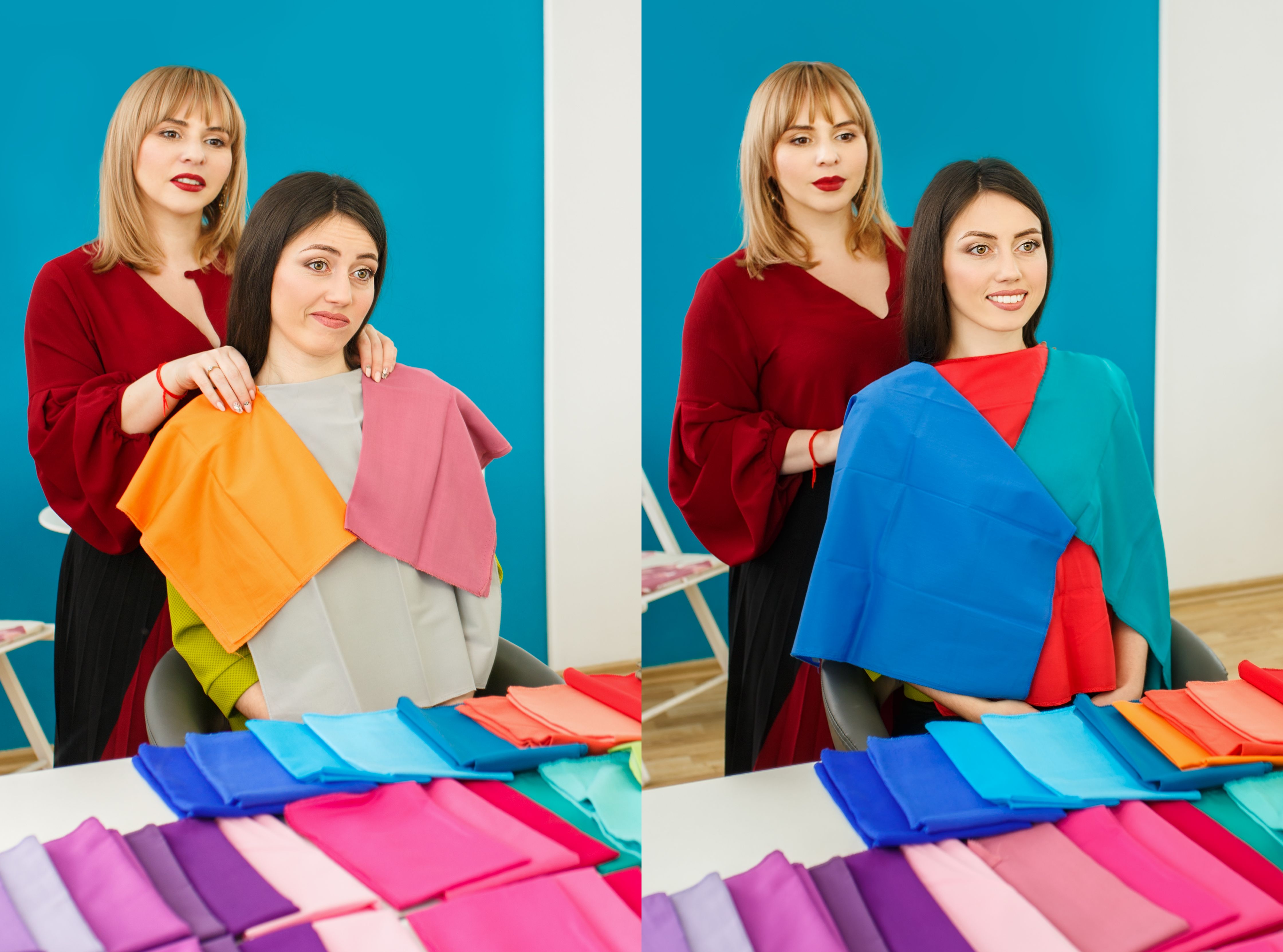How Fashion Inspiration Evolves Through Social Media
Color Matching Clothes: The AI Rulebook for Smarter Styling


Introduction: Why Color Matching Still Gets Overlooked?
You can have the trendiest wardrobe in town, but if your colors clash, it all falls apart.
Color matching isn’t just a technical detail — it’s the invisible backbone of good styling. When colors complement each other, your outfit feels intentional, balanced, and expressive. But when they fight for attention? You look...off. And not in the “fashionably rebellious” way.
Ironically, despite how central color is to fashion, most people don’t actually understand how to pair hues with confidence. That’s where AI comes in with the knowledge of color theory in fashion.
This blog is your guide to color matching clothes — through the lens of AI-powered logic and practical styling. We’ll explore:
- Why traditional color rules are outdated (and what’s replaced them)
- How Glance AI reads tone, contrast, and emotion to suggest combinations
- Real examples of coordinated outfits that go beyond beige + black
- A look into digital twins and emotion-based lookbooks
- And how to master your own color coordination without a fashion degree
Forget old-school color wheels. This is color matching, upgraded by artificial intelligence.
The Old Rules of Color Matching — and Why They’ve Evolved

For decades, style advice relied on simplified color systems: warm vs. cool, match your shoes to your belt, avoid wearing more than three colors at once. While useful for beginners, these rules rarely captured the nuance of personal tone, cultural aesthetics, and emotional impact.
Traditional Color Matching Logic
Most early fashion guidance followed three frameworks:
- The Color Wheel: Pair complementary (opposite) or analogous (neighboring) colors
- Seasonal Palettes: Spring, Summer, Autumn, Winter types defined by skin undertones
- Neutral Anchoring: Use black, white, grey, navy, or beige as the base and add one accent color
These approaches still hold value — but they assume everyone fits neatly into defined categories. Reality is more complex.
Why These Rules Are No Longer Enough
Fashion in 2025 is hyper-personalized, context-aware, and visually led. Rigid rules can limit expression or lead to mismatched intent.
Let’s say you wear a complementary color combo — blue and orange — to a somber event. You’re technically “color matched,” but emotionally misaligned. Or you follow the neutral rulebook but your skin tone gets washed out in pale greys.
Even worse? You wear what a fashion app recommends, only to realize it doesn’t “feel like you.”
What we need now isn’t more rules. We need responsive systems that adapt to individual people, settings, and moods. That’s exactly where Glance AI redefines the game.
How Glance AI Matches Colors — The Science Behind the Suggestions

If traditional color matching relies on generic rules, Glance AI uses something smarter: real-time personalization powered by machine learning, emotional logic, and digital styling data.
Glance doesn’t just consider what looks good on most people — it studies what works for you, in your current mood, environment, and intent.
What Glance AI Analyzes Before Matching Colors
- Skin Tone, Undertone, Hair & Eye Color
Glance evaluates your undertones (warm, cool, neutral) using your uploaded selfies or digital twin. This determines whether you suit muted earthy tones or bright jewel hues. - Contrast Ratio
Some people suit high contrast pairings (like navy and white), others shine with low contrast combinations (like camel and beige). Glance detects this based on your natural pigmentation and facial features. - Mood & Emotional Intent
Choose how you want to feel — confident, relaxed, professional — and Glance maps that intent to color logic. For example,- Confident = red, cobalt, black
- Relaxed = sage green, soft blue, off-white
- Creative = lilac, rust, mustard
- Context & Occasion
Outfits are matched not just by hue, but by where you’ll wear them, the fabric types you choose and more. Glance adjusts its suggestions for formal events, social outings, casual weekends, or cultural celebrations. - Current Trends & Regional Norms
Glance filters recommendations by location and culture to avoid color mismatches that might clash socially (e.g., all-white outfits in regions where white signifies mourning).
Behind the Scenes: AI Matching in Action
Glance AI uses a trained neural network, fed with millions of fashion images, color-coded lookbooks, and real-world success/failure outfit data. Then it layers that knowledge with your personal profile to suggest clothing combinations that are:
- Flattering to your tone and body type
- Emotionally aligned with your intent
- Aesthetically balanced based on color theory in fashion styling.
- Culturally and seasonally relevant
That’s why Glance recommendations feel more intuitive than prescriptive. They’re data-backed but emotionally smart.
Color Pairing Examples — What Works, What Doesn’t, and Why

Seeing theory in action is where everything clicks. Below are real-world color pairing scenarios decoded by Glance AI, highlighting what works — and what doesn’t — when matching clothes based on your tone, intent, and context.
1. Classic Contrast: Navy & White
- Why it works: High contrast. Universally flattering. Feels crisp, clean, and formal.
- Best for: Office looks, summer parties, job interviews.
- Glance AI note: Great for high-contrast skin tones. Can feel “too stiff” for relaxed environments unless softened with texture (e.g., linen or knit).
2. Analogous Flow: Olive, Sage, and Beige
- Why it works: Low contrast, nature-inspired tones that create harmony.
- Best for: Weekend outfits, outdoor events, casual layering.
- Glance AI note: Works best for warm undertones. Avoid this palette if your skin leans cool — it may look dull.
3. Unexpected Edge: Lilac & Charcoal Grey
- Why it works: Mixes soft and strong. Feminine edge meets modern minimalism.
- Best for: Creative roles, evening wear, fashion-forward styling.
- Glance AI note: Cool undertones benefit most. Lilac can brighten dull skin, while charcoal adds grounding.
4. Mismatch Alert: Red & Lime Green
- Why it clashes: Competing for dominance. No visual hierarchy.
- Where it fails: Formal settings, professional wardrobes, most skin tones.
- Glance AI fix: Separate them. Use red as a dominant and lime as a micro-accent (like socks or lining).
5. Monochrome Modern: All Tan Layers
- Why it works: Clean, editorial, sophisticated.
- Best for: Minimalist wardrobes, fashion events, transitional seasons.
- Glance AI tip: This look succeeds only when there's variation in texture and depth — suede, wool, cotton. Otherwise, it can look flat.
6. Triadic Balance: Burgundy, Mustard, and Navy
- Why it works: Triadic color scheme. Balanced energy across the spectrum.
- Best for: Casual smart outfits, street style, layered looks.
- Glance AI note: Works on deeper skin tones especially well. Adds character without chaos.
These aren’t just pairings — they’re mood maps. And Glance AI helps you master them without needing to memorize color wheels or fashion textbooks.
Digital Twins, Emotional Styling & Glance AI’s Color Future
Fashion is no longer just about trends—it’s about precision personalization, and Glance AI is leading this shift by merging digital identity with color science.
At the core of this evolution is the Digital Twin: an AI-generated version of you that understands your body, preferences, skin tone, and even emotional intent.
What Is a Digital Twin in Fashion?
Your Digital Twin is a virtual replica of your styling DNA. Created through selfie analysis, inputs, and AI learning, it becomes the foundation for every look Glance recommends. Think of it as your style interpreter, trained on both color logic and emotional cues.
How Emotional Styling Works
What colors suit me? isn’t static. You don’t want to wear the same palette on a date as you do in a boardroom. That’s why Glance AI lets you choose how you want to feel, then generates outfits that match that feeling.
Examples:
- Feeling bold? Glance pulls from power palettes: red, cobalt, black.
- Want calm? Expect soft greens, dusty blues, or creams.
- Need creativity? Look for unexpected pairings like rust and lilac or saffron and slate.
This emotion-first styling goes beyond typical personalization. It reflects the reality that mood drives fashion choices just as much as occasion or body type.
The AI Rulebook for Color Matching

Here’s how Glance AI distills complex theory into styling guidance:
Factor | What Glance AI Does |
| Tone Matching | Analyzes undertones to recommend flattering palettes |
| Context Matching | Adapts suggestions to your event, mood, culture |
| Combination Logic | Applies complementary, triadic, or monochrome rules dynamically |
| Emotional Mapping | Suggests colors based on how you want to feel |
| Cultural Sensitivity | Avoids combinations that may be taboo or misaligned in certain regions |
The result? A wardrobe that always makes sense—for you, not just the algorithm.
Conclusion: Stop Guessing, Start Matching with Confidence
Matching colors isn’t about memorizing combinations. It’s about understanding yourself—your tone, your mood, your moment—and translating that into style. When done right, color matching elevates your entire look. It sends the right message before you ever say a word.
With Glance AI, you don’t need a stylist or a fashion background. You need your digital twin, your intent, and a few taps. The rest? Handled by intelligent systems that understand color science, fashion color psychology, and you.
FAQs
1. What does color matching in clothes mean?
Color matching refers to pairing clothing items in complementary, analogous, or harmonious color schemes that enhance visual balance, flatter your appearance, and express a consistent style mood.
2. Why is color matching important in fashion?
Wearing colors that work well together improves your appearance, boosts confidence, and sends the right message. Poorly matched colors can create visual tension and undermine the impact of even the best-designed outfits.
3. How does Glance AI help with color matching?
Glance AI analyzes your skin tone, mood, setting, and style preferences. It then generates lookbooks and outfit suggestions based on real-time color theory, emotional intent, and cultural relevance.
4. Do different skin tones need different color matches?
Yes. Undertones (warm, cool, neutral) significantly influence which colors enhance your natural features. Glance AI customizes its recommendations based on your digital twin and profile inputs.
5. What are the best basic color combinations for everyday wear?
Classic combinations like navy and white, grey and black, olive and beige, or burgundy and cream are versatile, timeless, and suit most tones. Glance AI recommends palettes based on your tone and context.
6. Can AI really match clothes better than a human stylist?
AI like Glance doesn’t replace intuition — it enhances it. With access to millions of styling data points, cultural context, and real-time analysis, Glance AI offers faster, more accurate combinations customized to your profile.
7. What’s the difference between color matching and color blocking?
Color matching focuses on harmony and cohesion between shades. Color blocking intentionally uses bold, contrasting colors for visual impact. Glance AI supports both approaches based on your goal and comfort level.






